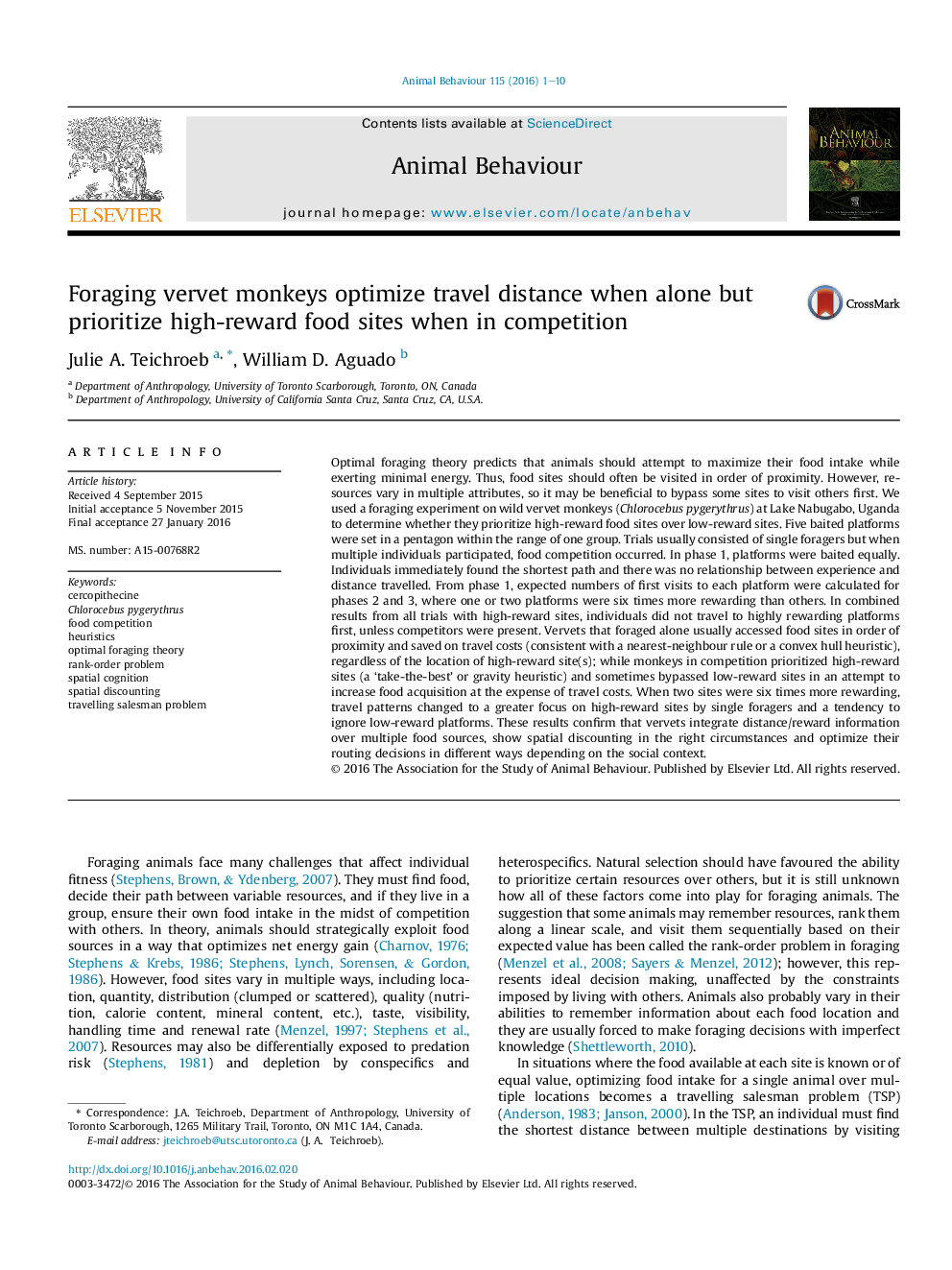| کد مقاله | کد نشریه | سال انتشار | مقاله انگلیسی | نسخه تمام متن |
|---|---|---|---|---|
| 8489069 | 1552213 | 2016 | 10 صفحه PDF | دانلود رایگان |
عنوان انگلیسی مقاله ISI
Foraging vervet monkeys optimize travel distance when alone but prioritize high-reward food sites when in competition
ترجمه فارسی عنوان
در حالی که میمون های ووروت می توانند بهینه سازی فاصله سفر را به تنهایی انجام دهند، اما در مسابقه رقابت می کنند
دانلود مقاله + سفارش ترجمه
دانلود مقاله ISI انگلیسی
رایگان برای ایرانیان
کلمات کلیدی
موضوعات مرتبط
علوم زیستی و بیوفناوری
علوم کشاورزی و بیولوژیک
علوم دامی و جانورشناسی
چکیده انگلیسی
Optimal foraging theory predicts that animals should attempt to maximize their food intake while exerting minimal energy. Thus, food sites should often be visited in order of proximity. However, resources vary in multiple attributes, so it may be beneficial to bypass some sites to visit others first. We used a foraging experiment on wild vervet monkeys (Chlorocebus pygerythrus) at Lake Nabugabo, Uganda to determine whether they prioritize high-reward food sites over low-reward sites. Five baited platforms were set in a pentagon within the range of one group. Trials usually consisted of single foragers but when multiple individuals participated, food competition occurred. In phase 1, platforms were baited equally. Individuals immediately found the shortest path and there was no relationship between experience and distance travelled. From phase 1, expected numbers of first visits to each platform were calculated for phases 2 and 3, where one or two platforms were six times more rewarding than others. In combined results from all trials with high-reward sites, individuals did not travel to highly rewarding platforms first, unless competitors were present. Vervets that foraged alone usually accessed food sites in order of proximity and saved on travel costs (consistent with a nearest-neighbour rule or a convex hull heuristic), regardless of the location of high-reward site(s); while monkeys in competition prioritized high-reward sites (a 'take-the-best' or gravity heuristic) and sometimes bypassed low-reward sites in an attempt to increase food acquisition at the expense of travel costs. When two sites were six times more rewarding, travel patterns changed to a greater focus on high-reward sites by single foragers and a tendency to ignore low-reward platforms. These results confirm that vervets integrate distance/reward information over multiple food sources, show spatial discounting in the right circumstances and optimize their routing decisions in different ways depending on the social context.
ناشر
Database: Elsevier - ScienceDirect (ساینس دایرکت)
Journal: Animal Behaviour - Volume 115, May 2016, Pages 1-10
Journal: Animal Behaviour - Volume 115, May 2016, Pages 1-10
نویسندگان
Julie A. Teichroeb, William D. Aguado,
